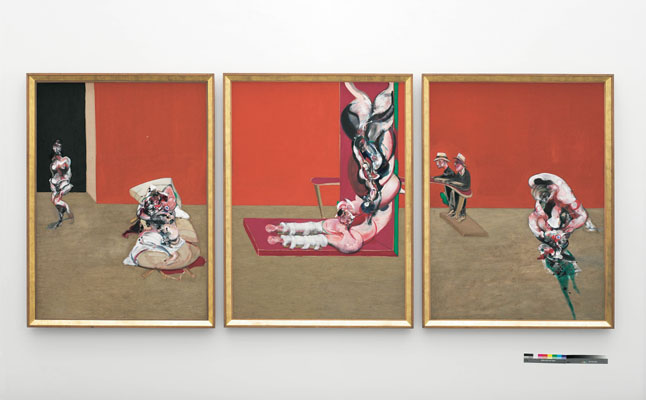“I have a feeling of mortality all the time,” Francis Bacon once told the art critic, David Sylvester. “Because, if life excites you, its opposite, like a shadow, death, must excite you. Perhaps not excite you, but you are aware of it in the same way as you are aware of life, you’re aware of it like the turn of a coin between life and death. And I’m very aware of that about people, and about myself too, after all. I’m always surprised when I wake up in the morning.”
The skull beneath the skin; the mortified flesh; the crucified figure hung upside down, “like a worm crawling down the cross”; the screaming mouth, twisted into a rictus of horror – such intimations of mortality are everywhere in Tate Britain’s darkly magnificent survey of Bacon’s art. There have been a number of retrospectives of the painter’s work in recent memory – notably in Moscow, Paris and Venice – but this is the first such show to have been staged in Britain for a generation. Considerably smaller than the last Tate exhibition, held in 1985, it consists of only around 70 works. Its tight focus is the source of its great strength. Bacon was an uneven painter, but here, thanks to an admirably fastidious selection of pictures – borrowed from all four corners of the globe – he is shown at his vibrant and disconcerting best.
The son of a racehorse trainer, he was born near the Curragh, in Ireland, in 1909. He was conspicuously slow out of the stalls for someone destined to become one of the great painters of his century. Having moved away from Ireland following the discovery of his homosexuality, which led his father to disown him, he knew that he wanted to be an artist....


